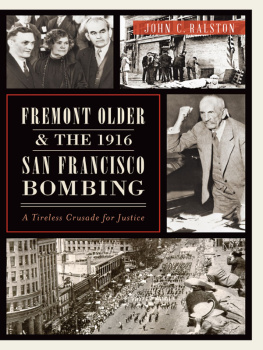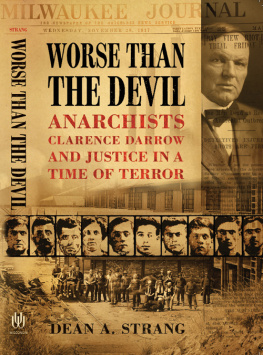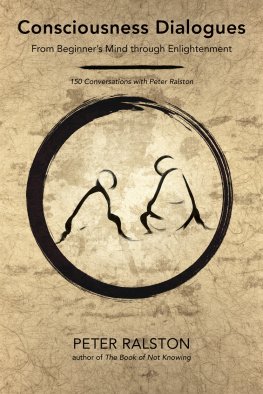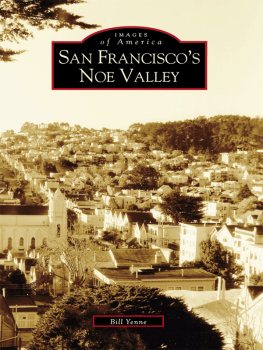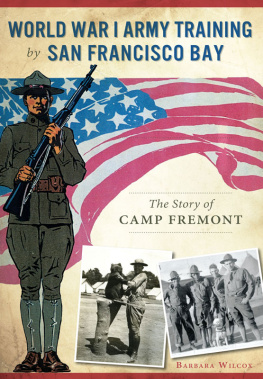
Published by The History Press
Charleston, SC 29403
www.historypress.net
Copyright 2013 by John C. Ralston
All rights reserved
Cover images: Front, clockwise from upper left: San Francisco Public Library History Room; authors collection; Bancroft Library; San Francisco Public Library History Room.
First published 2013
e-book edition 2013
ISBN 978.1.62584.751.5
Library of Congress Cataloging-in-Publication Data
Ralston, John C., 1942
Fremont Older and the 1916 San Francisco bombing : a tireless crusade for justice / John C. Ralston.
pages cm
print edition ISBN 978-1-62619-267-6 (pbk.)
1. Bombings--California--San Francisco--History--20th century. 2. Trials (Murder)--California--San Francisco. 3. World War, 1914-1918--Protest movements--California--San Francisco. 4. Older, Fremont, 1856-1935. 5. Mooney, Thomas J., 1882-1942. 6. Billings, Warren K., 1893-1972. 7. Journalists--California--San Francisco--Biography. I. Title.
HV6432.44.S36R35 2013
363.32509794609041--dc23
2013043025
Notice: The information in this book is true and complete to the best of our knowledge. It is offered without guarantee on the part of the author or The History Press. The author and The History Press disclaim all liability in connection with the use of this book.
All rights reserved. No part of this book may be reproduced or transmitted in any form whatsoever without prior written permission from the publisher except in the case of brief quotations embodied in critical articles and reviews.
Contents
Preface
This book is the product of a consuming interest in the history of my native city, San Francisco. In particular, it is the product of a long fascination with a figure that dominated my citys history for almost forty years, the great newspaper editor Fremont Older. More about Olders life and career will be found in the first chapter of this work, so it suffices to say here that besides being at the top of his profession, he had a unique gift for personal growth: beginning his career as a yellow journalist who published gossip and scandals in the fashion of the time, he developed into a nonjudgmental figure who looked beneath the surface of individuals and events to seek the root causes of both individual and societal behavior.
In 2003, I gave a presentation to the San Francisco History Association (SFHA) on the Billings-Mooney case that led to a two-part article in the quarterly publication of the San Francisco Museum and Historical Society (SFM&HS) on the case, all of which has culminated in the work you are reading. As so often with anything he touched, Older dominated the case, which unfortunately he did not live to see resolved. While this work may add to the voluminous scholarship on the Billings-Mooney case, I hope that it stands as a tribute to Older and that my writing meets the high standards he demanded of all who worked with and for him.
I would like to thank the staff at the San Francisco Main Library History Room for its help in obtaining photographs and illustrations, as well as permissions to reprint: Jeff Thomas, Dee Dee (Wendy) Kramer, Photo Curator Christina Moretta and Archivist Susan Goldstein. Thanks to Susan Snyder at the Bancroft Library, University of CaliforniaBerkeley, for her prompt help in supplying images and permissions. Thanks also to the unnamed staff at the Green Library, Stanford University, who long ago recognized the guy who keeps coming in requesting obscure old San Francisco newspaper files. Thanks to Paul Middents in Washington State for pointing out todays location of the Alibi Clock that figured so prominently in the Billings-Mooney case. Thanks to Mike, Vince and Josh of the City of Vallejo, California, Department of Public Works, for responding so quickly to my queries about the same clock.
I thank my brother, Stephen, for reading and correcting the section of the epilogue referring to the decisions of the United States Supreme Court under Chief Justice Earl Warren. My special thanks to Aubrie Koenig, commissioning editor at The History Press in Charleston, South Carolina, for her enthusiasm in recognizing the potential of this work and guiding it through publication, and to History Press project editor Ryan Finn.
My final thanks are reserved for a person very special, my wife, Lana. Born in an outlying area of Siberia, a native of the former Soviet Union, she has delved enthusiastically into the history of her adopted state of California. Her contribution to our local Los Altos Hills Historical Society is acknowledged by all who have had the good fortune to experience it. Her contribution to my life is beyond description. This book is dedicated to her.
Introduction
The American Dreyfus Case
On Saturday, January 5, 1895, at the cole Militaire on Pariss Champs-de-Mars, about 1,200 meters southeast of the looming Eiffel Tower, a strange ceremony was held. In the courtyard, a thirty-six-year-old artillery officer, now a convict, was marched under guard and ordered to halt. As a crowd gawked, another officer ripped off the convicts insignia of rank, buttons and decorations and, in a final degradation, broke his sword over his knee. The humiliated officer was then marched around the courtyard perimeter before soldiers from Paris regiments. Outside the courtyard, it was the crowds turn. With no such military restraint required of the soldiers in the courtyard, they screamed, Traitor, Death to him and, tellingly, Dirty Jew!
The previous September 1894, a cleaning woman at the German embassy, secretly working for Frances Statistics (intelligence) Section, had found in a wastebasket a document offering to sell the Germans military secrets. Called the bordereau, it appeared to have been written by an officer knowledgeable about French army artillery. Handwriting experts who were shown the document were divided as to who wrote it, but nonetheless, the Statistics Section named a suspect: the degraded artillery officer Captain Alfred Dreyfus. Dreyfuss misfortune was to be in the wrong place at the wrong time. He was Jewish at a time when anti-Semitism was particularly rife in France, which had a long, dishonorable history of it. He was from Alsace, a disputed region on the Franco-German border that was annexed by Germany after France suffered a humiliating defeat in the Franco-Prussian War of 1871. And Frances defeat still stung the nations military establishment. Thus, anti-Semitism, sectionalism and militarism all conspired against Dreyfus. Although his handwriting only slightly matched the writing on the bordereauand another officers handwriting matched it moreDreyfus was secretly tried for treason, convicted and sentenced to life in a hellish prison on Devils Island, just above French Guiana, where he was not expected to live long.
On Saturday, September 23, 1916, more than twenty-one years after Dreyfuss degradation, a jury filed into a San Francisco courtroom after deliberating and announced its verdict: guilty of murder in the first degree. The defendantnow a convicted murdererwas one Warren Knox Billings. The verdict was a shock, so much so that a veteran San Francisco Bulletin editor had a heart attack upon hearing it. Oddly, for reasons that would not be revealed for another four years and were questionable even then, prosecuting attorney James Brennan had not asked for the death penalty for Billings but rather life imprisonment. Exultant district attorney Charles M. Fickert said that Billingss conviction was merely a pioneer case and that he expected similar verdicts for more defendants.
Less than five months later, on Friday, February 9, 1917, Fickert got his similar verdict. A jury in the murder trial of Thomas (Tom) J. Mooney also returned a verdict of guilty in the first degree. There was no recommendation of life imprisonment, meaning that Mooney would be sentenced to hang. Tom Mooneys sister, Anna Mooney, screamed and fainted, and his aged mother began crying. Mrs. Israel Weinberg, wife of one of Mooneys codefendants, wailed and fainted as well. Mooney paled but was quiet as he was handcuffed and led from the courtroom. Again, Fickert was jubilant: We are merely on the threshold of the prosecutions to follow this conviction.
Next page
